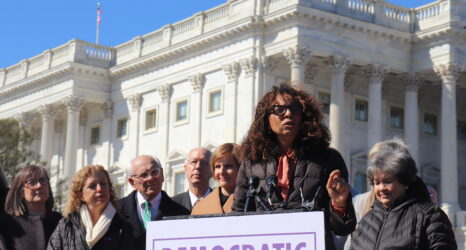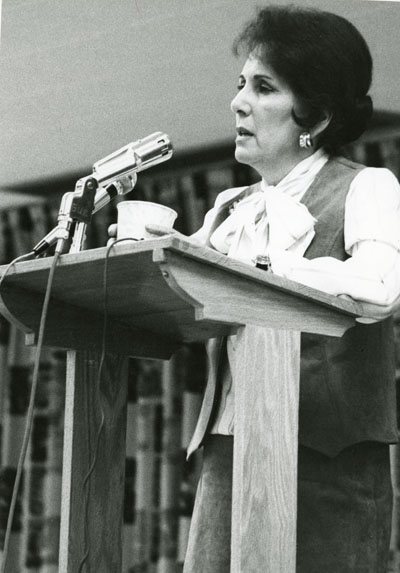
In the days since Justice Ruth Bader Ginsburg’s death, I have frequently thought not only about the monumental impact that her work as a litigator and Supreme Court Justice has had on the lives of all people in this country, but also about her friendship with my grandmother, Dr. Estelle Ramey.
On Jan. 17, 1973, Justice Ginsburg presented her first oral argument before the U.S. Supreme Court in Frontiero v. Richardson, a case that held that the U.S. military could not constitutionally apply more stringent standards for female service members’ entitlement to spousal dependency benefits than for those applied to men.
Following the argument, at the suggestion of a colleague, Justice Ginsburg went to meet my grandmother for the first time at her Georgetown Medical School office—marking the beginning of a long and treasured friendship.
They shared similar backgrounds. Both were raised in Brooklyn by mothers who maintained a razor-sharp focus on ensuring their daughters received an education and the support needed to achieve what had been unattainable in their own lives due to the structural constraints of their circumstances and of the times.
Both Justice Ginsburg and my grandmother married men who were far ahead of their time and fully supported their professional pursuits and viewed their wives’ successes with pride—rather than insecurity.
Both went on to break into fields then almost exclusively occupied by men—Justice Ginsburg, of course, in law, and my grandmother in medicine, as a professor of physiology and biophysics, as co-founder and president of American Women in Science, and, ultimately, as a national feminist speaker.
Finally, they both took on a similarly pioneering focus in their work. They both argued that stereotypes about the different capabilities and appropriate roles for women versus men were not only unfounded, but also harmful to both groups.
As Justice Ginsburg said in her eulogy at my grandmother’s funeral:
“Armed with research data, Estelle documented women’s superior staying power: Women in the United States live longer lives than their male peers and handle stress better. She suggested that her colleagues might fruitfully explore why that was so. She thought it important to study sex differences in the interest of all humankind. Real advancement of women cannot come, she counseled, without understanding the problems of both men and women, and the harmful stereotypes that impede both from realizing their full human potential.”
For Justice Ginsburg, this argument was based in law. She persuasively argued that laws treating women and men differently based on their sex rely on unfounded and ultimately destructive stereotypes violative of the U.S. Constitution.
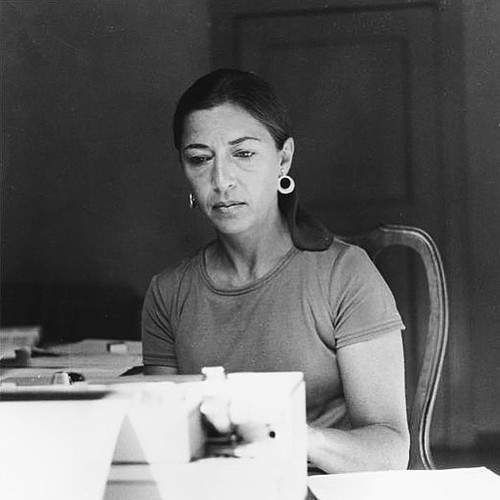
This ultimately changed the legal standard applied when courts review challenges to such discriminatory laws—which has beneficially affected the day-to-day lives of people of all genders. Importantly, she made these arguments by demonstrating the harm of state-sanctioned sex-based discrimination on both women and men.
In Reed v. Reed, she wrote the brief challenging an Idaho law that required males to be preferred over females in assigning the administrator of an estate. This distinction was based on biased notions of men’s abilities versus those of women and the Supreme Court ultimately held that the law’s differential treatment based on sex was unconstitutional.
Justice Ginsburg further demonstrated that discriminatory laws were also harmful to men in cases like Weinberger v. Wiesenfeld—where she argued that limitations in the Social Security Act which permitted widows but not widowers to collect special benefits while caring for minor children violated the Constitution.
In doing so, she successfully rebutted the notion, then-enshrined in law, that child care was a role to be fulfilled solely by women, denying to men the duty and opportunity to care for their minor children. This gender line, she argued, “helps to keep women not on a pedestal but in a cage.”
In Califano v. Goldfarb, Ginsburg challenged a provision of the Social Security Act that allowed a male widower to receive survivor’s benefits only if he had been receiving at least half of his support from his late wife during her life—despite the fact that a female widower was entitled to these benefits regardless of whether she had been dependent on the earnings of her deceased husband.
Here, the gender-based distinction in the law was based on biased assumptions about the importance of women’s earnings versus those of men. This served to harm the surviving male spouse and family of a female wage earner, and the Supreme Court held that this sex-based distinction was unconstitutional.
Through the cases that she litigated before becoming a judge, Justice Ginsburg showed that the pursuit of equal treatment under the law was more than just a women’s issue, but rather one of ensuring equal treatment and opportunities for all.
As she summarized it the preface to the book, My Own Words, these cases urged courts to recognize the equal-citizenship stature of women and men as a fundamental constitutional principle.
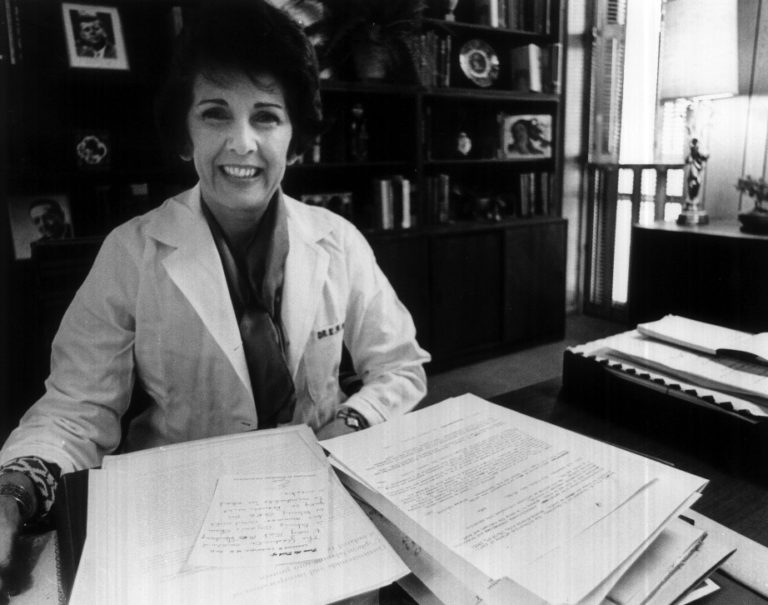
My grandmother’s insistence that biology is not destiny, was rooted in science. She used her medical training and research as an endocrinologist to refute the all too common argument that women are inherently unable to hold positions of power equal to men due to their biological differences.
Not long before she and Justice Ginsburg met, my grandmother had gained national acclaim when, in a highly publicized debate before the Women’s Press Club in Washington, D.C., she publicly demolished the statements of Dr. Edgar Berman, a member of the Democratic Party’s Committee on National Priorities and Vice President Humphrey’s physician and advisor, who had asserted that a woman could not be president due to “raging storms of monthly hormonal imbalances.”
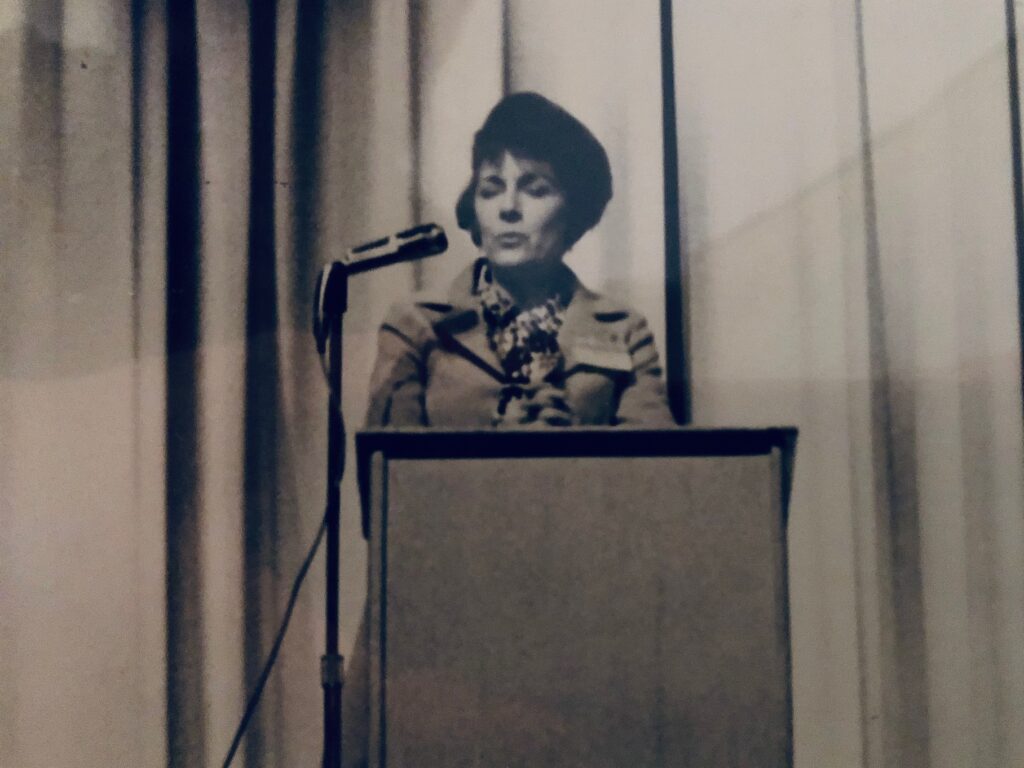
In her response to Dr. Berman and other similar arguments of the time, she explained that despite undeniable differences between the sexes, we have much more in common than what makes us different, and that assertions of women’s supposed inability to lead were rooted in bias and stereotypes rather than in science.
As she aptly wrote 48 years ago in the first edition of this very magazine:
“Women’s chains have been forged by men, not by anatomy.”
Neither woman argued that the irrefutable differences between women and men should be ignored, but rather that they should not be used to justify the denial of opportunities or the destructive treatment of either group by the government or by society in general.
Justice Ginsburg eloquently made this point in the majority opinion she penned once she had joined the Supreme Court in United States v. Virginia, writing:
“Inherent differences between men and women, we have come to appreciate, remain cause for celebration, but not for denigration of the members of either sex or for artificial constraints on an individual’s opportunity.”
Any differential treatment, she emphasized, must not “create or perpetuate the legal, social, and economic inferiority of women.”
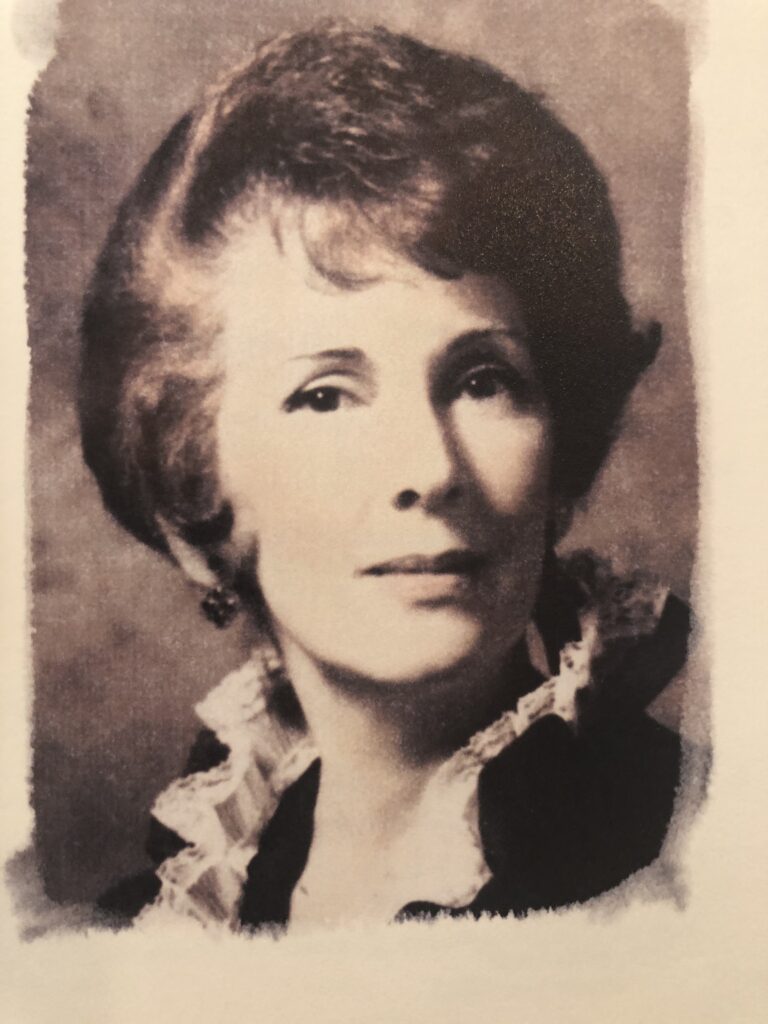
They both understood that women and men should not be treated differently based on outdated assumptions about appropriate gender roles, but rather should be given equal opportunity to succeed, participate fully in society, and achieve their full human potential.
Above all, beyond the significant achievements they both enjoyed in their respective fields, Justice Ginsburg and my grandmother both placed supreme importance on family and friends, and on supporting others to achieve their highest potential. As Gloria Steinem stated in her eulogy at my grandmother’s funeral:
“She never failed to show and to say that her beloved family and close friends were more important to her than all the external trappings of success.”
In the book Letters for our Children: Fifty American Share Lessons in Living (Random House), my grandmother wrote these words, which I return to frequently:
“If I could leave you with any advice, it would be to speak words of caring not only to those closest to you, but to all the hungry ears you encounter on your journey through a cold world. Stop on that mountain climb to bring along those less agile or well endowed. It will make the view even more beautiful when you get to the top. For my own epitaph, I ask that it be: ‘I loved and was loved and all the rest was background music.’”
You may also like:




